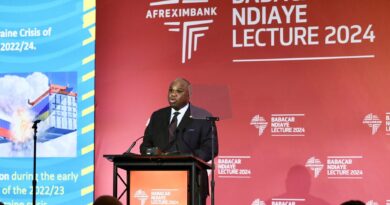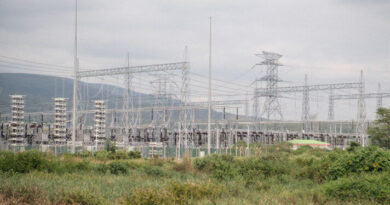Insights from the US and India for electricity open access in Kenya and South Africa

By Sakshi Pawar, Vivek Shastry and Andrew Kamau
Kenya and South Africa have recently started moving toward an open access regime in their electricity sectors, while the US and India have been on this path for over two decades. Open access involves unbundling the generation, transmission, and distribution of electricity to create a more competitive and efficient market. This restructuring facilitates access by independent power producers (IPPs) to the transmission grid, increasing power supply and attracting investment and innovation in the electricity sector.
The transition, however, also brings challenges that affect grid stability, the financial health of utilities, and the socio-economic costs of ensuring equitable access to electricity. This blog introduces the complexities of ensuring open access in electricity, and finds that Kenya, South Africa, and even India have opportunities to learn from each other and the US to anticipate and overcome implementation challenges by, for example, instituting cost-reflective tariffs, creating independent system operators, and managing financial risk to utilities.
What Is Open Access?
The cost of building infrastructure to generate and supply electricity used to be so high that the power sector in most parts of the world acted as a “natural monopoly”—one that arises from high economic and technological barriers to entering an industry rather than any anticompetitive practice. Because competition, which typically brings advantages like lower costs and improved services, was absent in this context, regulatory bodies played a crucial role in overseeing the industry to ensure electricity was supplied in a way that met consumer needs.
Power monopolies were referred to as vertically integrated utilities (VIUs) in the US, which accurately described their structure, as they controlled generation, transmission, and distribution of electricity. They were present in other countries with the same structure, but the specific terminology used to describe them varied. For example, in some cases, they were just referred to as state-owned enterprises (SOEs), particularly in countries where the government had full or partial ownership of the utility.
The electricity sector has since evolved toward vertical unbundling and consumer choice. The move toward open access (OA) is concentrated in generation, while transmission and distribution still maintain regulated monopolies. This is reflected, for example, in the open access definition in India’s Electricity Act: “The nondiscriminatory provision for the use of transmission lines or distribution system or associated facilities with such lines or system by any licensee or consumer or a person engaged in generation.”
This shift has led to an increase in IPPs, free-market pricing of electricity and its services, interregional energy transfers, and wholesale power transactions. Independent transmission system operators (ISOs) have emerged to improve coordination between different market players as well as allocation of costs. However, the integration of market forces with the technical realities of power systems has presented significant challenges. For instance, competition results in declining revenues for utilities, which jeopardize their financial stability and raise concerns of a utility death spiral. Financially bailing out a utility eventually falls on the consumer or the taxpayer, raising questions of whether open access is beneficial to its consumers after all. Therefore, it is crucial to understand both the pitfalls and opportunities facing countries managing power sector reform.
While goals for OA are common, each country’s journey toward it is unique, shaped by each nation’s economic, social, and regulatory environment. Cross-learning, however, does allow for identifying common challenges, adopting successful strategies, and avoiding pitfalls.
Open Access Implementation
The US began implementing open access in phases in 1920, being one of the first to separate power generation from transmission and distribution. A significant milestone in the US journey toward OA was the introduction in 1996 of the Federal Energy Regulatory Commission’s (FERC) Orders 888 and 889. Order 888 required utilities to provide grid access to other generators, mandated functional separation of generation from distribution and transmission, required filing of open access transmission tariffs (standardized agreements that outline terms and pricing for transmission services), and allowed utilities to recover stranded costs. Order 889 established the Open Access Same-Time Information System, a platform that provides real-time data on available transmission capacity, ensuring transparency and preventing discriminatory practices. Over the decades, ISOs were established from the groundwork of these FERC orders to oversee wholesale electricity markets, ensuring competitive pricing and equitable access to the grid.
India’s journey toward OA began with the Electricity Act of 2003, which aimed to address frequent power outages and attract private investment. As mentioned, the act defined OA as “nondiscriminatory provision for the use of transmission lines or distribution system or associated facilities,” and it mandated its implementation by January 2009 for consumers with loads exceeding 1 megawatt (MW). India’s OA system has allowed for significant private-sector involvement, but challenges remain for cross-subsidies and tariff structures. India has traditionally used a cross-subsidy system in which industrial and commercial customers pay higher tariffs to subsidize lower rates for agricultural and domestic consumers, many of whom are low income. Additionally, India has implemented concessions to increase renewable energy integration, such as waiving interstate transmission charges for such power. However, as renewable energy becomes more economically viable, these concessions may need to be revised to encourage continued innovation while ensuring that tariffs remain fair for consumers.
Kenya is moving toward OA with the goal of encouraging competition and integrating more renewable energy sources. Recent reforms, including the Kenya Energy Act and OA regulations, are designed to attract IPPs and reduce the monopoly held by Kenya Power. These reforms aim to provide new suppliers access to the market, potentially reducing costs for consumers.
Kenya’s energy mix, which is reliant on renewables like geothermal and hydropower, presents both opportunities and challenges. The country has made impressive strides toward a green energy future, with about 93% of its electricity coming from renewables, but this energy mix requires sophisticated grid management to ensure stability, especially during peak demand periods.
South Africa’s electricity market has been dominated by the state-owned utility Eskom, which controls generation, transmission, and distribution. The country’s shift toward OA, although still in its early stages, aims to unbundle these functions to increase competition and integrate more renewable energy. One of the key challenges South Africa faces is the financial health of Eskom, which has been burdened by debt and operational inefficiencies.
Cross-Learning to Improve Implementation
The US moved away from cross-subsidies in favor of more cost-reflective tariffs (which reflect the true cost of providing electricity), improving economic efficiency in the electricity sector. India could consider a gradual reduction of cross-subsidies as well, while implementing targeted subsidies for low-income consumers.
India and Kenya can both consider adopting models similar to US ISOs. For India, this reform would entail increasing the independence and expanding the role of its load dispatch centers, which are responsible for coordinating and controlling the power system to ensure reliable electricity supply. Increasing their independence would mean granting these centers more autonomy from existing utility interests and government control, similar to the structure of US ISOs. For Kenya, ISOs could serve as a model to improve grid management, which is particularly important given its high reliance on renewable energy sources. India and Kenya can also absorb from the US experience the importance of transparent information systems and competitive transmission pricing. These elements lead to unbiased decision-making in grid operations, market management, and transmission planning, which is crucial for ensuring fair competition and efficient system operation.
Lessons from the US and India can help South Africa manage financial risk to utilities while creating space for IPPs to enter the market. Transparent tariff mechanisms and fair stranded cost recovery processes will be essential to ensure that neither consumers nor investors bear an undue burden while transitioning to a more competitive market structure.
Open access is not just about opening the grid to more players; it’s about building a resilient, transparent, and competitive electricity market that benefits consumers, investors, and ideally the environment. Cross-learning from different open access approaches allows for a better understanding of regulatory, technical, and market challenges and helps anticipate financial and operational issues that will inevitably arise.
news@theenergyreview.com
Discover more from THE ENERGY REVIEW
Subscribe to get the latest posts sent to your email.


